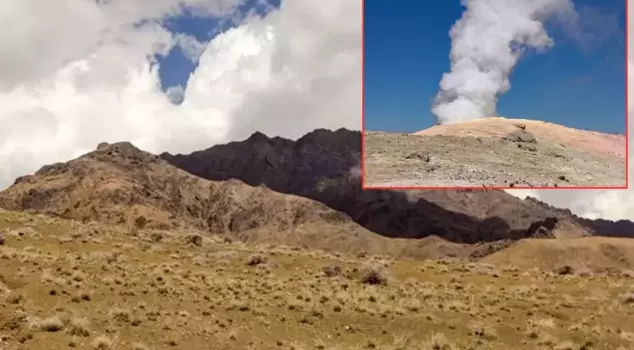
17.10.2025 20:33
Scientists have determined that the summit of the Taftan Volcano in Iran, which was thought to have been extinct for 710,000 years, has risen by 9 centimeters in the past year and that pressure accumulation underground is continuing.
Our neighboring country Iran is discussing the news from scientists. According to a report on NTV, scientists have detected an approximately 9-centimeter bulge at the summit of the Taftan Volcano, which is believed to have been extinct for 710,000 years, between 2023 and 2024.
According to researchers, this movement may be related to the accumulation of hot liquids and gases underground or the upward pressure from magma located about 5 kilometers deep.
"A SERIOUS PRESSURE IS BUILDING UP"
Reports from the region in 2024 revealed that smoke and ash were coming from the crater. Scientists indicate that these emissions are a sign of increasing geothermal activity.
The lead author of the study, volcanologist Pablo González, stated in an interview with Live Science, "Taftan should no longer be considered extinct; it should be regarded as an active volcano. We do not expect an eruption at this time, but a serious pressure is building underground."
DATA FROM SATELLITES
The team used a new satellite analysis method called "common-mode filter" to clean atmospheric noise and clearly monitor ground movement. According to the data, the source of the deformation is located 470 to 630 meters below the summit.
Displacement was also observed on the eastern and western slopes of the volcano. Scientists determined that this activity cannot be explained by either rainfall or earthquakes, and is entirely due to internal volcanic processes.